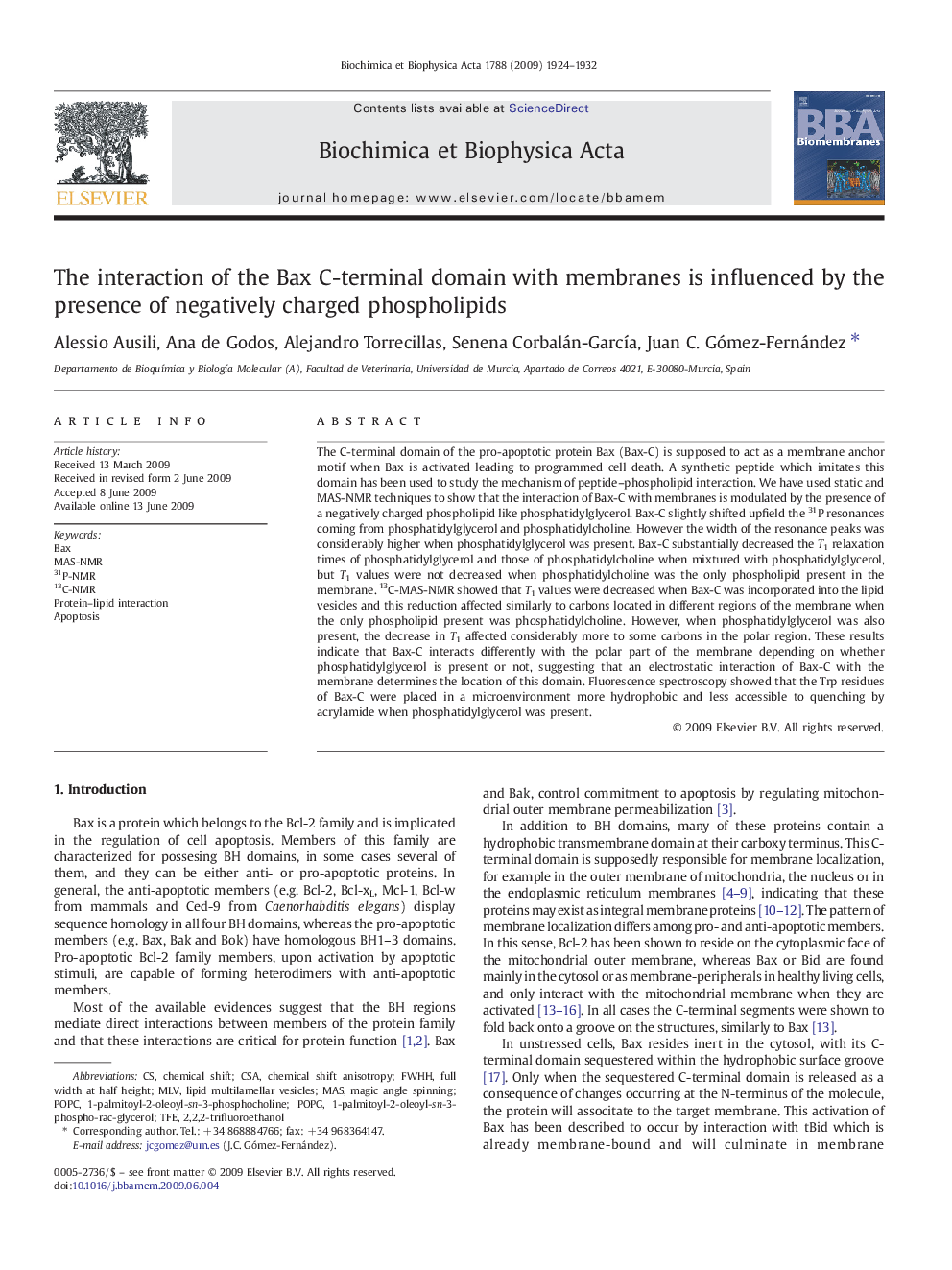| Article ID | Journal | Published Year | Pages | File Type |
|---|---|---|---|---|
| 1944966 | Biochimica et Biophysica Acta (BBA) - Biomembranes | 2009 | 9 Pages |
The C-terminal domain of the pro-apoptotic protein Bax (Bax-C) is supposed to act as a membrane anchor motif when Bax is activated leading to programmed cell death. A synthetic peptide which imitates this domain has been used to study the mechanism of peptide–phospholipid interaction. We have used static and MAS-NMR techniques to show that the interaction of Bax-C with membranes is modulated by the presence of a negatively charged phospholipid like phosphatidylglycerol. Bax-C slightly shifted upfield the 31P resonances coming from phosphatidylglycerol and phosphatidylcholine. However the width of the resonance peaks was considerably higher when phosphatidylglycerol was present. Bax-C substantially decreased the T1 relaxation times of phosphatidylglycerol and those of phosphatidylcholine when mixtured with phosphatidylglycerol, but T1 values were not decreased when phosphatidylcholine was the only phospholipid present in the membrane. 13C-MAS-NMR showed that T1 values were decreased when Bax-C was incorporated into the lipid vesicles and this reduction affected similarly to carbons located in different regions of the membrane when the only phospholipid present was phosphatidylcholine. However, when phosphatidylglycerol was also present, the decrease in T1 affected considerably more to some carbons in the polar region. These results indicate that Bax-C interacts differently with the polar part of the membrane depending on whether phosphatidylglycerol is present or not, suggesting that an electrostatic interaction of Bax-C with the membrane determines the location of this domain. Fluorescence spectroscopy showed that the Trp residues of Bax-C were placed in a microenvironment more hydrophobic and less accessible to quenching by acrylamide when phosphatidylglycerol was present.
